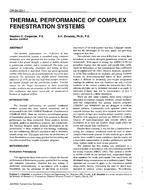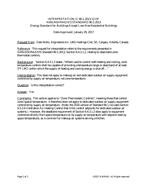The objective of this work is to develop smart environmental control systems for office buildings that incorporate human thermal preferences. Towards this goal, in this paper, we present a new method for learning occupant thermal preferences, using sensor data for indoor environment variables, and occupant feedback expressed through their preference votes, such as “warmer", “cooler", “no change, collected using web-enabled human-building interfaces integrated with building management systems.
We developed a generalized thermal preference model in which our main hypothesis, “Different people prefer different thermal conditionsâ€Â, is explicitly encoded, instead of developing different models for each occupant. Using a dataset from a large population collected in different air conditioned buildings in North America, we use a Bayesian approach to identify clusters of people with similar preference characteristic and we predict the probability distributions of thermal preferences for a given set of environmental conditions using different models for each cluster while considering the presence of noise in the data. The thermal preference profiles of new occupants are inferred from data by using a mixture of the general sub-models for each cluster. The goal is to ensure the reliability of model predictions, by collecting data representative of thermal comfort delivery conditions for which the models would be implemented in actual buildings. In this paper, we demonstrate the feasibility of our approach using data collected in private offices in a perimeter building zone.
Citation: 2018 Winter Conference, Chicago, IL, Conference Papers
Product Details
- Published:
- 2018
- Number of Pages:
- 9
- Units of Measure:
- Dual
- File Size:
- 1 file , 1.8 MB
- Product Code(s):
- D-CH-18-C021


